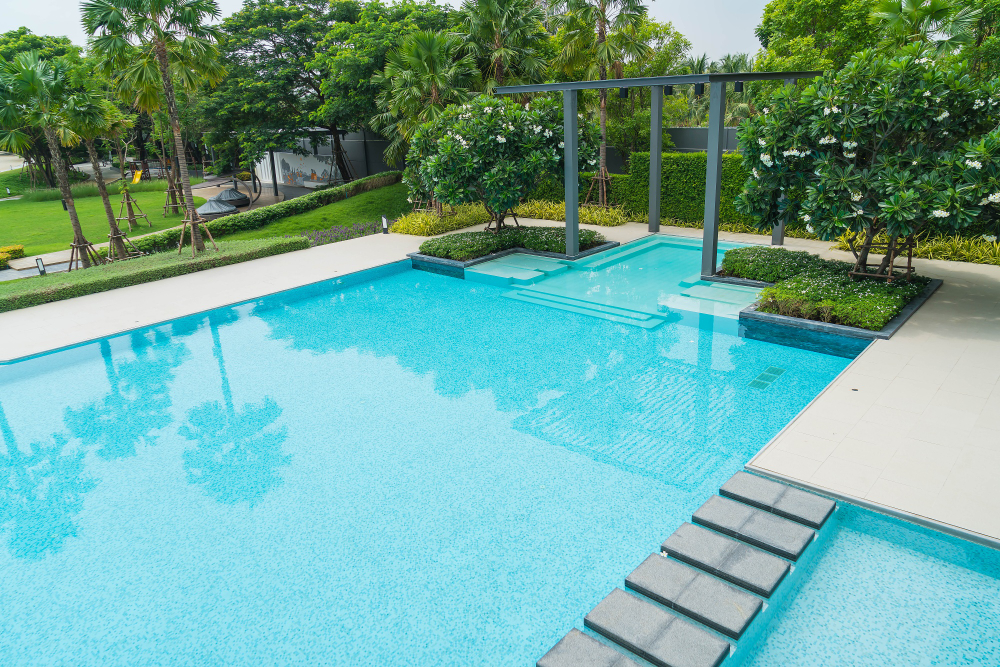A Comprehensive Guide on How Often Should You Resurface Your Pool

Owning a pool is one of life’s great luxuries, especially if you're blessed to live in a sunny paradise like Tampa, FL, where warm days extend well beyond the summer months. However, with this luxury comes the responsibility of maintenance, and one of the most significant aspects of pool care is resurfacing. But how often should you resurface your pool? What are the signs that it's time to resurface, and why is it so crucial? This comprehensive guide will answer all these questions and more.
Understanding Pool Resurfacing
Before we explore the frequency of pool resurfacing, let's first understand what it entails. Simply put, resurfacing involves applying a fresh layer of material to the interior surface of your pool. Over time, the surface of a pool can become rough, stained, or damaged, which not only affects its appearance but can also impact its structural integrity and safety.
Common materials used for pool resurfacing include plaster, aggregate, and tile. Each has its advantages and lifespan, which play a role in determining how often resurfacing is needed.
Factors Affecting Resurfacing Frequency
Several factors influence how often a pool needs resurfacing:
1. Material Type
- Plaster is the traditional choice for pool surfaces and typically lasts between 5 to 10 years. It's affordable and offers a classic look, but it can be more susceptible to staining and surface wear.
- Aggregate surfaces, made from a mixture of concrete and small stones or glass beads, can last anywhere from 10 to 20 years. They offer a more durable and eye-catching finish than plaster.
- Tile is the most long-lasting option, with a lifespan of 20 years or more. It's highly resistant to chemical erosion and offers a luxury aesthetic but comes with a higher initial cost.
2. Water Chemistry
Maintaining balanced water chemistry is essential for the longevity of your pool's surface. Imbalanced pH levels, high alkalinity, or excessive calcium hardness can wear down the surface prematurely, necessitating more frequent resurfacing.
3. Usage and Maintenance
The more often you use your pool, the more wear and tear it experiences. Regular maintenance, including cleaning and addressing repairs promptly, can help extend the life of the surface. Neglected pools will typically require resurfacing more often.
4. Weather Conditions
In Tampa, FL, the weather can be both a blessing and a challenge for pool owners. The intense sunlight and occasional tropical storms can affect the pool surface. UV rays can break down materials over time, while heavy rains may contribute to shifts in water chemistry.
Signs Your Pool Needs Resurfacing
Knowing when your pool needs resurfacing is crucial to maintaining its condition. Here are some warning signs to watch out for:
- Rough Texture: If the pool surface feels rough or abrasive, it could indicate that the top layer has worn away. This can be uncomfortable for swimmers and may cause minor injuries.
- Staining or Discoloration: Persistent stains and discoloration that don’t come off with regular cleaning may mean the surface is compromised.
- Leaks: Cracks or other damage can lead to leaks, resulting in water loss and potential damage to the surrounding area.
- Chips or Peeling: Visible chips, cracks, or peeling of the surface material are clear indicators that resurfacing is needed.
The Resurfacing Process
When it comes time to resurface your pool, understanding the process can help set your expectations:
- Draining the Pool: First, your pool will need to be drained completely to expose the existing surface.
- Surface Preparation: The old surface is prepped, which may involve sanding, grinding, or removing the top layer to ensure the new material adheres properly.
- Applying New Surface: The new surface material is applied. This step requires precision and skill to ensure a smooth, even finish.
- Curing Time: Once applied, the new surface needs time to cure and set. This can take several days, during which the pool must remain empty.
- Refilling and Balancing: Finally, the pool is refilled, and the water chemistry is balanced to protect the new surface.
Why Professional Resurfacing Matters
While some DIY enthusiasts might consider tackling pool resurfacing themselves, hiring professionals ensures the job is done correctly and safely. Professional pool resurfacing companies, like Aqua Coat Pool Plastering in Tampa, FL, bring expertise, experience, and the right equipment to the table. They can also provide valuable advice on surface materials and maintenance practices that will extend the life of your pool.
Maintaining Your Pool Post-Resurfacing
After resurfacing, proper care and maintenance are key to extending the lifespan of your new pool surface. Here are some tips to consider:
- Regular Cleaning: Skim, brush, and vacuum your pool weekly to prevent debris and algae buildup.
- Consistent Water Testing: Test your water regularly to maintain optimal pH and chemical levels.
- Inspect for Damage: Keep an eye out for early signs of wear and tear, such as small cracks or discoloration, and address them promptly.
- Seasonal Maintenance: Conduct thorough inspections and maintenance at the start and end of each swimming season.
Conclusion
In conclusion, how often you should resurface your pool depends on several factors, including the material used, pool usage, maintenance habits, and environmental conditions. Typically, resurfacing every 5 to 20 years is recommended, with regular inspections to ensure timely intervention.
If you need professional pool resurfacing in Tampa, FL, consider contacting Aqua Coat Pool Plastering for free estimates and expert service. Keeping your pool in top condition not only enhances its appearance but also ensures it's a safe and enjoyable haven for years to come.
Whether you're a new pool owner or have had your oasis for decades, understanding the nuances of pool resurfacing is crucial for maintaining its beauty and functionality. With this guide in hand, you're equipped to make informed decisions about the care and maintenance of your pool. Enjoy the peace of mind that comes with knowing your pool is ready to provide endless relaxation and fun!